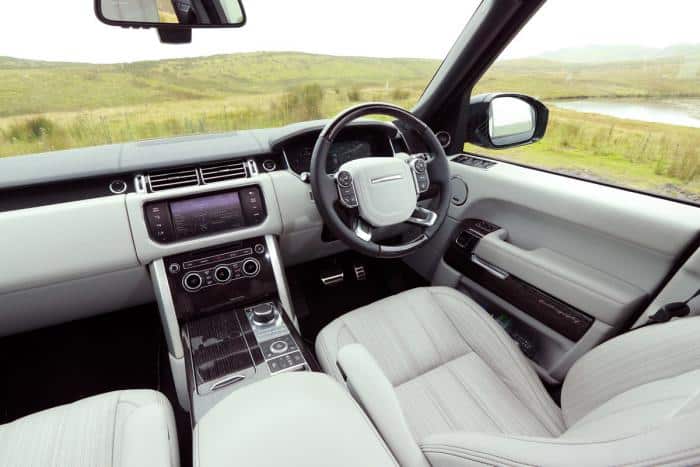cWith the proliferation of digital services in homes, businesses and retail locations like shops, cafes and restaurants, it is no longer acceptable to ‘disconnect’ from the digital world in which we live just because we are mobile. WiFi connections are now available on trains and planes, allowing commuters to stay connected, clinch deals, finalise reports or just keep abreast of the latest news on the move. With this in mind, why should an automobile offer any less?

The car of the future will need to offer a great deal more, as the digital frontier gets ready to take the automotive industry by storm.
Wireless technologies and the associated benefits that they bring are an ever-increasing and indispensable part of modern society. Services such as Digital Radio and TV (DAB and DVB-T), GSM, 3G, 4G, WiFi and Bluetooth are now commonplace in most executive and prestige vehicles. With demand increasing and implementation costs reducing, these technologies are becoming available across the majority of vehicles offered by manufacturers. For example, Bluetooth is common in all but the most basic entry level vehicles, and DAB and DVB-T are optional on most mid-range vehicles. Integrated GSM, 3G, 4G, 5G and WiFi technologies will be available in the next wave of models from the major high-end vehicle manufacturers, and along with Intelligent Transport Systems (ITS), are set to deliver the much awaited ‘connected car’.
’It is little known that modern prestige vehicles have over 20 integrated antennas which cover a host of analogue and digital wireless links, and that number is due to rise with the increase in ‘multiple reception’ and ‘diversity’ systems
It is little known that modern prestige vehicles have over 20 integrated antennas which cover a host of analogue and digital wireless links, and that number is due to rise with the increase in ‘multiple reception’ and ‘diversity’ systems. In fact, if all of the antennas integrated into a mid-range prestige vehicle were re-installed as separate rod antennas on the roof, the vehicle would look, well, ridiculous.
This rapid increase in the level of wireless technology within vehicles will allow a multitude of new services to be realised quickly, however manufacturers will need to form robust strategies to account for the increased levels of software upgrades required.
Wireless vehicle connectivity will be available to the vehicle manufacturer, dealer, streaming media agencies (music, video), insurance companies, breakdown services, content providers (apps, sat nav), repair shops, support centres, network operators, the intelligent transport system, and of course, the vehicle occupants. It is estimated that the amount of data transmitted and received by vehicles will rise from 4 MB to 5 GB per month in the near future. This could however spike significantly in vehicles that have multiple occupants with a wide variety of music and film streaming tastes.
’With this increased connectivity set to deliver a greater array of safety, efficiency, entertainment and productivity features and services it’s no surprise that future vehicles are now being likened to ‘mobile phones on wheels’.
With this increased connectivity set to deliver a greater array of safety, efficiency, entertainment and productivity features and services it’s no surprise that future vehicles are now being likened to ‘mobile phones on wheels’.
Another point to consider is that consumers have historically been used to a one-off payment when purchasing a vehicle, however with embedded data and voice connections, an additional contract with a network operator may also be required. To deliver voice and data services with a robust level of performance, such that the customer is not plagued with audio, video or data corruption/dropouts is very difficult and costly to realise. With consumers paying for connectivity, it will be up to the network operators and vehicle manufacturers to deliver services which are perceived by the consumer to be adequate. Whilst broadcast and network operators maintain geographical service coverage across urban and rural locations, it will be down to vehicle manufacturers to optimise their integrated systems such to limit service degradation. In addition, vehicle manufacturers will need to ensure that signal loss and interference sources inside the vehicle are kept to a minimum to ensure good connectivity for personal devices.
Degradation of performance in digital systems is abrupt. The phenomenon of ‘audio bubbling’ - which sounds as though your DAB radio is underwater - transitions very quickly into silence accompanied with the all too familiar message, ‘no signal’. This is the point at which the wanted wireless signal is too weak, or interference signal too strong, causing an intolerable Bit Error Rate (BER) condition in the receiver. This is the same for video pixilation followed by picture dropout, and poor phone reception followed by call dropout. The annoyance factor for all three of these customer perceived issues is high on the agenda of vehicle manufacturers who want to avoid customer complaints.
With the rapid expansion of vehicle integrated technologies, there is a need for a better understanding of the issues ahead, and new test methods to validate automotive wireless services.
As the race for superior connectivity and services between vehicle manufacturers ensues, I will continue to address the EMC test and development issues facing vehicle manufacturers and explain how MIRA is working to overcome them in my upcoming Engineer Guest Blogs.










Water Sector Talent Exodus Could Cripple The Sector
Maybe if things are essential for the running of a country and we want to pay a fair price we should be running these utilities on a not for profit...